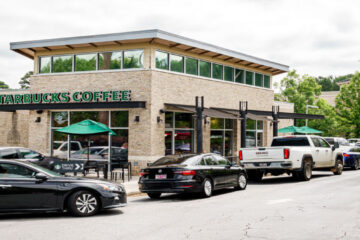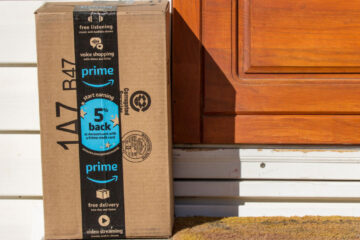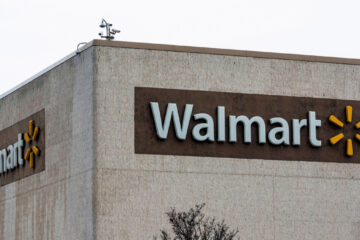Black Friday and Cyber Monday hit record highs in terms of sales figures, but there was also a record use of the “Buy Now, Pay Later” (BNPL) payment method.
Adobe Analytics reported that there was a 47% increase in use of BNPL during Black Friday versus a year ago.
The increase isn’t unexpected as there had been reports of as much as 350% increase in use of BNPL between 2019 and 2021. Accenture also published a study in September 2021 that predicted that 10% of e-commerce sales would be purchased via the BNPL method by 2024.
But the use of BNPL comes with risks for consumers, similar to any other financial tool. TheStreet spoke to Center for Responsible Learning (CRL) senior litigation and policy counsel Nadine Chabrier and WalletHub analyst Cassandra Happe to understand what entices consumers to use BNPL and the important information consumers need to know about the growing product.
Related: Black Friday hits record sales, but troubling consumer behavior isn’t adding up
Why People Use Buy Now, Pay Later
Both Chabrier and Happe told TheStreet that one of the primary reasons consumers have flocked to BNPL use is because of the lower barrier to entry.
“I think one of the reasons that consumer like Buy Now, Pay Later is the ease of entry into the product space, so it makes it very attractive to consumers,” Chabrier said.
Chabrier supported her claim by citing study by the Consumer Financial Protection Bureau (CFPB) that 73% of applicants of BNPL in 2021 were approved.
Happe mentioned that unlike other short term loan tools — like a store-branded credit card — BNPL has a quick approval process.
“Usually an application for a store card, it takes a little bit of time,” Happe said. “It’s not as easy as just being able to go into an app like you can do with a lot of the Buy Now, Pay Later options and just use the app to say, “I’m going to split this up into four payments.”
Other than lead time for approval, BNPL doesn’t usually have credit checks, or at least ones that are as stringent as credit cards. Chabrier gave the example of underwriting.
“When a credit card underwrites your loan or your credit, they are looking at your credit picture and your ability to repay as a whole,” Chabrier said. “Buy Now, Pay Later is not required to that, and some don’t.”
Happe said that a lot of consumers have found that BNPL has become a way of life due to rising inflation because the tool allows them access to necessities that they may not have the money upfront to pay for.
“They can take advantage of getting that tank of gas they need for them to get to and from work — they can go ahead and just do Buy Now, Pay Later for that,” Happe said.
Related: Cyber Monday final sales figures reveal some surprises
What Consumers Need To Know About Buy Now, Pay Later
Accessibility, however, amplifies the risk on consumers who use the method. Chabrier said cited a 2023 CFPB study that said that Black, Hispanic, and female consumers and those with incomes from $20,001 to $50,000 were “significantly more likely” to use BNPL compared to white, non-Hispanic, male, and even those with less than $20,000 household income.
Chabrier said that while BNPL appeals to many of these lower to middle income consumers, there is a risk of unexpected costs that comes with the BNPL method.
Another CFPB study said that about 10% of BNPL users incurred late fees in 2021, up from 7.9% in 2020.
“Though [BNPL] is marketed as interest free, consumers might find that they are charged a late fee or some other kind of fees associated with their product use that they didn’t expect,” Chabrier said.
Happe said that late fees can be “astronomical” because “there’s no limitation to it,” which connects to the biggest drawback of BNPL that both Happe and Chabrier harped on: The lack of regulation for the budding product.
She points out the underwriting as one example, because these types of credit checks keep approval for short term loans away from the hands of those who may be at risk of being unable to repay their debts.
“That’s what can feed into consumers going overboard without any proper regulatory checks,” Chabrier said. “You don’t want people to use a product that doesn’t have the proper regulatory protections around it and then be financially harmed.”
Chabrier and the CRL are currently working to ensure that financial agencies and the government can better regulate the use of BNPL. In a brief released just last month about BNPL, the CRL and Consumer Federation for America (CFA) released a few policy recommendations for BNPL.
The study called for the CPFB to “clarify that BNPL falls under the definition of consumer credit.” They said that in countries like Australia and the United Kingdom, BNPL providers have already began to be regulated similar to credit firms.
Other recommendations include ensuring that BNPL providers do not violate federal debt collection laws or engage in “unfair, abusive or deceptive practices by charging unfair fees.”
But while the wheels are in motion to add regulation to BNPL, there is still a long way to go and plenty of risk to consumers especially in the middle of the holidays.
Simplify the pulse of the market landscape with bite-sized intel from the masters. Real Money Pro is your dynamic financial ally, transforming market insights into strategic moves. Start your membership to elevate your portfolio.


